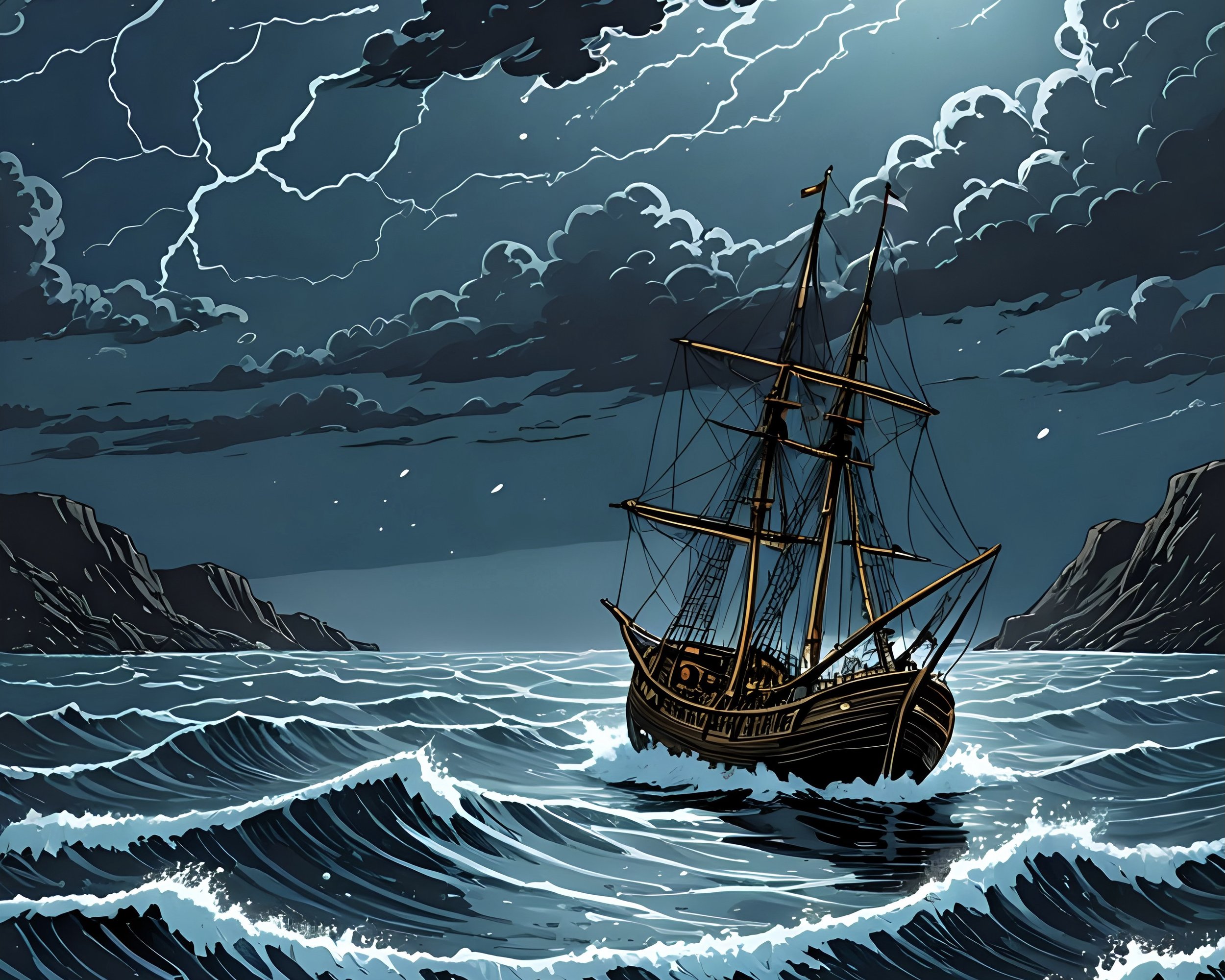The Horrible Hurricane of 1775
Newfoundland is no stranger to bad weather; storms blow in, they blow out again, and most of them are forgotten.
Not all of them though.
Nearly 250 years ago a storm hit the island with such force and left such destruction in its wake that it’s still not lost to time.
September 1775
The first week of September 1775 had been surprisingly good. The winds were light and the people of Conception Bay were busy. The squid were late that year and hundreds of small, open boats dotted the coastline engaged in the fishery.
Far south of Newfoundland it was a different story; there was a storm brewing.
In 1775 storms moved faster than news and the people of Newfoundland had no idea that on September 2 a serious storm had hit North Carolina, they had no idea that a hurricane was spinning it’s way up the seaboard and had Newfoundland in it’s cross-hairs.
Had they known they could have stayed ashore or sought sheltered ports but they didn’t, and what unfolded was horrific.
On September 11, the storm hit.
There was howling wind and torrential rain, perhaps worse still was the storm surge — the sea rose twenty-feet, throwing waves far inland, smashing buildings and sweeping them from the coast.
The strength of the storm was only half the story, the speed with which it struck left people with no time to prepare. The storm hit when Conception Bay was full of squid fisherman; their tiny boats were no match for the storm.
Boats capsized, sailing ships were thrown on shore.
Many fisherman never made it to shore, and even those who did struggled to find safety. Buildings and shelters were washing away.
The storm raged, leaving an unimaginable path of destruction. When the storm subsided parts of Conception Bay were in ruin. More than 700 hundred boats — 300 in Harbour Grace alone — were lost, including at least 11 ships, with most of their crews.
The death toll, counting those lost on the Grand Banks is estimated to be in the neighbourhood of 4000 people.
To put that in perspective, the summertime population of Newfoundland in 1775 is often cited at about 12000 people.
September 11th, Annual Register for 1775
It was gruesome.
For days after the storm, bodies washed ashore. According to a report in the Annual Register for 1775, “for some days after, in drawing the nets ashore, they often found 20 or 30 dead bodies in them; a most shocking spectacle!”
It’s said that bones washed ashore for years afterward.
The staggering death toll makes the Newfoundland Hurricane of 1775 one of the deadliest storms on record in North America.
That said, when the storm comes up in conversation these days it’s not often in a discussion of meteorology. You’re more likely to hear about when people share spooky stories around the campfire.
The Hollies of Northern Bay
The community of Northern Bay, on the north shore of Conception Bay, was particularly hard hit by the Newfoundland hurricane of 1775.
Legend has it that a fleet of fishing vessels with a crew of migrant fishermen was driven ashore by the wind and storm surge and many of the crew drowned.
While they may have drowned, they didn’t quite go away. From time to time they still make their presence known.
It is said that just before a storm, particularly a storm out of the northeast, the voices of the dead seamen can still be heard crying out, acting as a sort of warning.
The ghosts are referred to as ‘the hollies’
In 1964, Mary Elizabeth McCarthy recorded her memories of Northern Bay and included a passage on the hollies. She said they “could be heard (because I did) on a foggy night with their sad heave-ho, for certain the sound was there, whatever it was.”
The phenomenon is described in a 1980 issue of Decks Awash magazine shares the story of John Hogan, a fisherman who died in 1972. Hogan, apparently, not only heard the hollies but saw them. He described them as looking like regular men who, at times, were quite helpful — even assisting him in hauling nets.
I think Hogan’s tale deviates from general ‘holly lore’ — they tend to be ghosts that are heard but not seen.
I suppose Hogan was right about them being helpful — they’ve spent almost 250 years issuing their supernatural forecasts, cautioning mariners of impending storms. It’s as if they are supplying the sort of warning no one was able to give them…
For some reason I think that makes the tales even creepier.
-
September 11, Annual Register for 1775
The Forgotten Storm, Deana Stokes Sullivan, The Telegram,
The Multidisciplinary Rediscovery and Tracking of "The Great Newfoundland and Saint-Pierre et Miquelon Hurricane of September 1775", Alan Ruffman, The Northern Mariner
Northern Bay, Newfoundland's Grand Banks
Ghosts at Northern Bay, Decks Awash, December 1980
Holly, Dictionary of Newfoundland English



